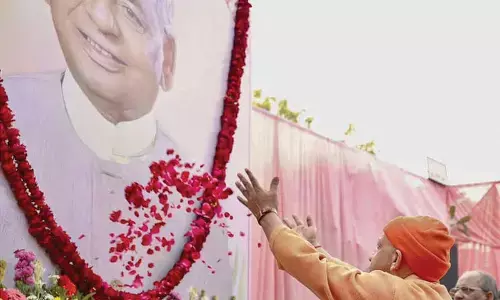Critical need of higher outlays for education sector

The instrumental role of education and public good nature of the same in the economic framework and human capital perspective is well-established.
The instrumental role of education and public good nature of the same in the economic framework and human capital perspective is well-established. It is recognised as critical factor in the emerging knowledge-based economies. Developed as well as that of East Asian countries' economic growth experience in fact indicates the same. India's experience, however, shows dire inadequacy of public investment leading to growing private expenditureon education. Within the public expenditure, a lion's share is made by the state government.
India's expenditure on education is around 7.0% of GDP on education which includes 4.3% as public expenditure and around 2.6% as private expenditure (Private Final Consumption Expenditure on Education, as estimated by NAS). What is also evident from the analysis of public expenditure on education is that only one per cent of GDP is borne by the Centre – Union government - while the rest 3 per cent is borne by States together. Of the total public expenditure on education in the country, the Centre's contribution is less than one-quarter (20 to 25%) and the rest three quarters is spent by state governments.
Even as a percentage of their total budget expenditure, Centre spends less than 10 per cent and states are spending more than 20 per cent on education. The long-pending raise in the public spending on education equivalent to 6 per cent of GDP, as also proposed by the NEP 2020, needs to be equally shared by both Centre and States, lest the development of education remains a lofty ideal.
The Union government using constitutional provision for imposing and collecting Education Cess to mobilise additional resources to meet or finance a few of its flagship initiatives in elementary and secondary education especially the SSA, RMSA which are now subsumed as Samagra Shiksha. Nearly half of the total expenditure incurred by Ministry of Education, Government of India, is met with such additional resources mobilised through education cess. Last two years' budget estimates indicate that education cess is more than the allocations made to two flagship schemes, Samagra Shiksha and Rashtriya Uchchatar Shiksha Abhiyan (RUSA).
Despite having such leverage, the Union Government is not able to increase its share in the total public expenditure on education. As a result there is increased pressure on constrained resources of the state governments. Given their resources and pressures of competing priorities related to various welfare and developmental initiatives, the state governments are constrained in bearing the burden of increasing the public expenditure on education equivalent to 6 per cent of GDP. Union government's contribution in increasing the public expenditure on education is conspicuously absent in NEP 2020 which envisages increased expenditure on the sector for achieving its goals.
As a result of inadequacy in public investment, despite the fact that the public good nature of education demands more of it, there is a growing trend in private expenditure on education in India. A notable trend over past three decades is that growth in private expenditure on education is higher than that of public expenditure. The ratio of public to private in terms of expenditure on education has declined during this period. Such trend reflects increasing privatisation of education in India and it has far-reaching policy implications.
The analysis also reveals that the share of expenditure on education with respect to GDP and total household consumption expenditure (HCE) is increasing which in turn shows that household expenditure on education is growing faster than the total HCE and GDP.
It is also observed that while nearly 4% of GDP is the total public expenditure on education in general, while public expenditure on higher education constitutes 1% of GDP. Education in general, accounts for less than 20% of total budget expenditure in India, whereas the higher education forms around 5%. The share of higher education in the total expenditure on education is around 30%. While Centre spends nearly 35% to 40% of its education expenditure on higher education, states spend less than 30%. Share of Centre in total expenditure on higher education increased more than its share in total expenditure on education. Most of the Centre's expenditure on higher education is spent for Central Institutions and as a result very meagre funds are provided towards 'transfers to states.' Increasing privatisation of higher education has implications for growing private expenditure and for further expansion of higher education.
The immediate effect of inadequacy of public expenditure on education and inefficient use of the same is that it compromised the quality of education in public institutions, because inadequacy of public expenditure led to shortage of human resources and other necessary infrastructure and facilities. The difference in quality of education delivered in public and private institutions perpetuates educational inequality and affects their employability through differences in levels of the knowledge, skills and competence of graduates.














